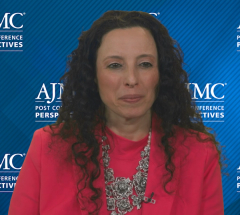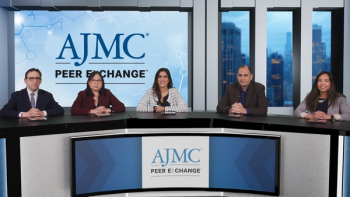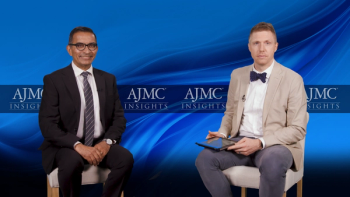
Payer Considerations and Documentation Requirements for Treatment Prior Authorization Requests
A medical expert discusses preauthorization requests and requirements for cardiovascular disease treatment, commenting on an abstract presented at the ACC 2023 Annual Scientific Session and Expo and World Congress of Cardiology.
Episodes in this series

Erin Michos, MD, MHS: There certainly can be a lot of clinical inertia in practice. A lot of times there’s limited time in practice, and especially in primary care visits, the primary care clinicians have so many issues to address that often their patient may be on a statin, but they don’t get to spend the time trying to intensify therapy or work toward getting patients to their goals. Then when we start talking about some of these newer medicines that are quite costly, like PCSK9 inhibitors or inclisiran, often there is a lot of paperwork for prior authorization that needs to be filled out. At least for PCSK9 monoclonal antibodies, it has gotten much easier in the United States, compared to when the drugs were first launched into clinical practice. But it’s still really important to document well to prepare the letters for the preauthorization. You have to demonstrate what their diagnosis is, do they have ASCVD [atherosclerotic cardiovascular disease], do they have FH [familial hypercholesterolemia]? What statins or other lipid-lowering therapy have they tried? What is their LDL [low-density lipoprotein] on that, are they still above their LDL goal? This is so there’s a lot of documentation for appeals.
It’s gotten easier for the PCSK9 monoclonal antibodies. Inclisiran, which is fairly new on the market, only about a year here in the United States, is a bit more challenging. It’s a different model, it’s a buy-and-bill, where it’s meant to be administered in a health system practice, like in a clinic setting. Or if that’s unable to be done in a clinic setting, using alternate injection centers, AICs, and the center would buy the drug and then bill the patient’s insurance later. The advantage of inclisiran is that after the baseline of a 3-month dose, the dosing is every 6 months, so that can be helpful for patients who have issues with adherence. For patients who have Medicare with supplement [insurance], it’s a bit easier to get inclisiran covered because it’s part of their overall facility fees and clinic visits, as opposed to a prescription out-of-pocket cost. But for patients who are not on Medicare, so under the age of 65, it can be quite challenging to get inclisiran onboard.
For bempedoic acid, which was approved in 2020, again, this is an oral medicine but still, there can be difficulty with preauthorization and cost. I just reviewed the terrific results from the CLEAR Outcomes cardiovascular outcome trial with bempedoic acid. My hope is now that we have an outcome trial with bempedoic acid that clearly demonstrates that this agent can reduce major cardiovascular events in a meaningful way, both in secondary and primary prevention, I’m hoping that will be the nudge it takes to get payers to cover this medication, so it’s not so costly for our patients. We’ll see, hopefully, the company will seek a new label indication. I’m hoping for a label indication in the primary prevention space because we have fewer options in that space than we do in secondary prevention.
To be more successful with preauthorization, it’s all about documentation, and this is why it’s good to have a system in place. Sometimes in a practice, it’s nice if you have 1 point person, whether it’s a nurse practitioner, or a specialty pharmacist, or preauthorization specialist, who can do all the paperwork. Because once you get familiar with what payers want to see in the documentation and have a standardized form, it does get easier than trying to reinvent the wheel each time. One key is to make sure you’re prescribing it for the FDA-approved indication for the drug. So again, make sure you document the patient’s diagnosis and how the use of this drug aligns with the FDA label. So often that requires documentation that they’ve tried other therapies, typically the oral generic therapies like statins or ezetimibe, and either are not able to tolerate them, or perhaps even despite being on maximally tolerated doses, they still have elevated LDL. That’s for the PCSK9 inhibitors and inclisiran and bempedoic acid.
We also have challenges with other classes of medicine, like the GLP-1 receptor agonists that we use to treat persons with diabetes and also for weight management. Again, it’s a similar thing, documenting the patient’s condition and how this aligns with the FDA label and what they’ve tried, and why this is the next step. I think the big thing is persistence. I don’t have data on this, but it seems like companies like an automatic denial, but usually on the re-appeal, I’ve been more successful. So it seems like if you don’t take no for an answer, follow back up, and again, the more you align with the FDA indication, persistence often pays off.
First of all, we want to try to make sure we’re following the guidelines we have in place. We have all these wonderful data about the benefits of lower LDL. There’s overwhelming evidence from genetic, observational, clinical trial data, that LDL cholesterol is causally related to ASCVD risk in a graded fashion. And that’s why, across all guidelines, LDL is a central target for preventive efforts. But as I mentioned, there’s substantial clinical inertia, many patients are not at their LDL goal. Another recent US study found that about 50% of patients with ASCVD were not treated with a high-intensity statin. I think it’s really important, since we know the documented benefit of these agents, to help have systems in place for implementation to try to get our high-risk patients to be on guideline-recommended therapy. And again, I’m focusing on lipids right now, but we see this across disease entities. There’s a similar push for patients with heart failure and HFrEF [heart failure with reduced ejection fraction]and trying to make sure they’re on the 4 pillars of therapy for heart failure.
At this meeting, ACC [American College of Cardiology] 2023, there were some interesting studies in implementation science, looking at the use of electronic nudges to see if that can help facilitate the onboarding of medications. This is interesting for practice groups about what strategies might work. One interesting study was called PCDS Statin, and this was an embedded trial in the [US Department of Veterans Affairs] health system. They randomized 27 different primary care practices to either having the electronic nudges or the usual care. What do these electronic nudges look like? Interestingly, investigators used AI [artificial intelligence] for the patients’ charts, to identify patients who had ASCVD, who were not on high-intensity statins, and looked for language in the chart that the patient may have statin-associated symptoms. They curated all that information. Then in the practices that got the electronic nudges, again there was overall about 49,000 high-risk patients with ASCVD who were being targeted. To these practices groups, they would send the clinicians a nudge, either synchronous with the patient’s coming visit, or asynchronous, with a note about what their patient’s ASCVD diagnosis was, did they have MI [myocardial infarction], or stroke, or PAD [peripheral artery disease]. It included what statin they are on, at what dose, or when it was last filled, as a marker of adherence, what their LDL is.
They had information in there about guideline recommendations supporting the use of high-intensity statins in this population. Then if patients had information in their chart that suggested they had statin intolerance, they also included the algorithm for managing statin intolerance. They had those nudges vs usual control, and overall, when you compared the practice groups, there was only a modest 3% uptake in the use of high-intensity statins. But if you looked at just the ones who got the electronic nudges, there was a significant 10% increase in the use of high-intensity statins, and there was also an increase in statin adherence, an increase in the proportion of days covered for statin use.
That was encouraging that you could use AI and clinical reminders to help overcome clinical inertia, to get high-risk patients on the appropriate intensity dose. But again, with a few caveats; 31% of clinicians opted out of the program, so nearly a third of clinicians did not what to receive electronic nudges. That suggests that clinicians in general have a lot of alert fatigue, there are a lot of different other types of nudges. So understanding the workload of the clinician and the cognitive overload, that electronic nudges may not be appealing in many health settings, I think is important.
Transcript edited for clarity.
Newsletter
Stay ahead of policy, cost, and value—subscribe to AJMC for expert insights at the intersection of clinical care and health economics.

















































